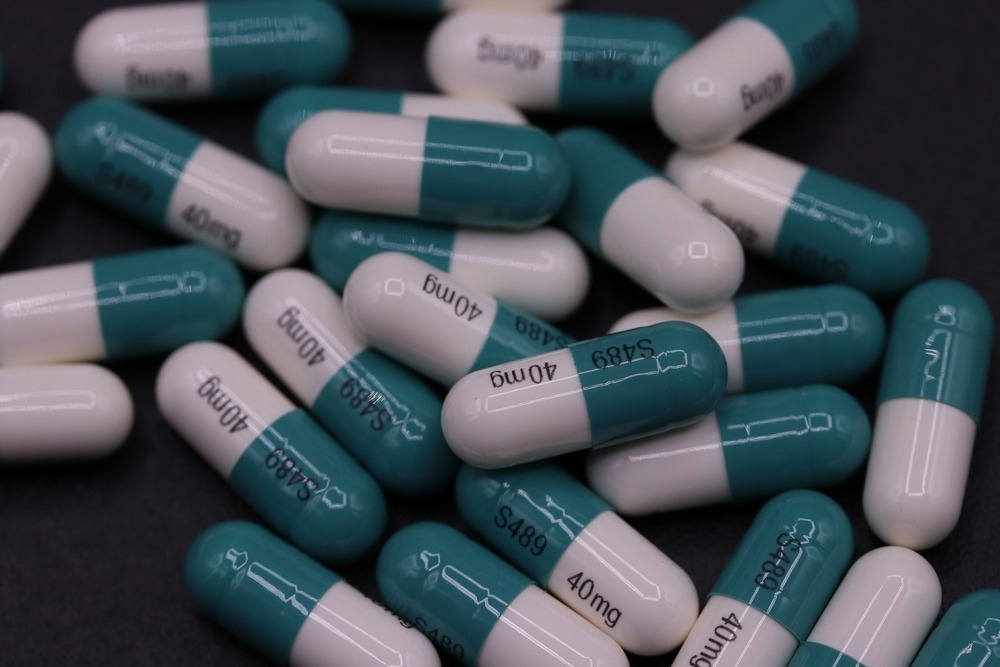Stimulants and atomoxetine emerge as most effective for core symptoms, but non-pharmacological therapies show promise in specific contexts and long-term data remains limited
 Study: Comparative efficacy and acceptability of pharmacological, psychological, and neurostimulatory interventions for ADHD in adults: a systematic review and component network meta-analysis. Image Credit: GildedHobo/Shutterstock.com
Study: Comparative efficacy and acceptability of pharmacological, psychological, and neurostimulatory interventions for ADHD in adults: a systematic review and component network meta-analysis. Image Credit: GildedHobo/Shutterstock.com
In a recent study published in The Lancet Psychiatry, researchers investigated the comparative efficacy and acceptability of existing interventions for attention deficit-hyperactivity disorder (ADHD) in adults.
Background
ADHD is characterized by persistent and pervasive patterns of hyperactivity/impulsivity, inattention, or both, and interferes with development and functioning. It remains the most common neurodevelopmental disorder, affecting 5% of children aged 6–18 years between 1990 and 2019. ADHD symptoms persist into adulthood for up to 75% of the affected population. In addition, ADHD often cooccurs with other dysfunctions or disorders.
Both pharmacological and non-pharmacological interventions are available for ADHD. Guidelines from the United Kingdom’s National Institute for Health and Care Excellence recommend non-pharmacological support if patients prefer it, medications are ineffective or poorly tolerated, or adherence to medicines is difficult. Given the concerns about the safety of ADHD medicines, gaining insights into the safety and efficacy of available ADHD interventions in adults is crucial.
About the study
In the present study, researchers compared available interventions for ADHD in terms of their efficacy, tolerability, and acceptability in adults. First, they searched for randomized controlled trials (RCTs) comparing interventions against controls or other interventions for treating symptoms in adults diagnosed with ADHD. Pharmacological therapies were included if their maximum planned doses were eligible per international guidelines.
Medications included stimulants, viloxazine, modafinil, guanfacine, clonidine, bupropion, and atomoxetine. For RCTs of cognitive training, medications, or neurostimulation alone, only double-blind trials were included. The primary outcomes were ADHD core symptom severity (based on self- and clinical-rated scales) at around 12 weeks and acceptability.
Acceptability was defined as an all-cause discontinuation rate. Effect sizes were estimated from pairwise meta-analyses and network meta-analyses (NMAs) using odds ratios for dichotomous outcomes and standardized mean differences for continuous outcomes. Secondary symptoms were ADHD core symptom severity at around 26 weeks and 52 weeks, tolerability, emotional dysregulation, quality of life, and executive dysfunction.
Tolerability was determined based on discontinuation due to adverse events. The researchers performed a series of NMAs using a random-effects model. The risk of bias of RCTs was assessed using the Cochrane risk of bias tool. Evidence certainty was evaluated using confidence in the NMA framework. In addition, numerous sensitivity analyses were performed.
Findings
The team identified more than 32,400 records from literature searches. Of these, 113 RCTs were included, which collectively recruited 14,887 participants. Overall, 50 treatments were identified and stratified as psychological therapies, neurostimulatory therapy and neurofeedback, pharmacological therapies, and control conditions.
Twenty-four RCTs compared active interventions, 16 of which did not include control conditions. No RCT on non-pharmacological interventions provided evidence that subjects were ineligible for pharmacological intervention. The team found that stimulants and atomoxetine were better than placebo in reducing the core symptoms of ADHD at around 12 weeks on both self- and clinician-rated scales.
Notably, relaxation therapy was worse than placebo in reducing ADHD core symptoms on the self-rated scale only. Further, psychoeducation, mindfulness, cognitive remediation, transcranial direct current stimulation, and cognitive behavioral therapy (CBT) were better in reducing ADHD core symptoms than placebo on the clinician-rated scale only. Guanfacine and atomoxetine were less acceptable than placebo.
At around 26 weeks, atomoxetine was more efficacious than placebo on the self-rated scale, while stimulants and mindfulness were more efficacious on the clinician-rated scale. Furthermore, atomoxetine, modafinil, stimulants, and guanfacine were less tolerable than placebo. Stimulants and atomoxetine were more efficacious than placebo for emotional dysregulation at around 12 weeks.
When analyses were restricted to RCTs with a low risk of bias, bupropion, stimulants, and atomoxetine were more efficacious than placebo in reducing self-reported symptoms; atomoxetine was also less acceptable than placebo.
Further, findings did not differ (from the main results) in analyses restricted to non-industry-sponsored studies or when classifying stimulants into methylphenidate and amphetamines.
Conclusions
Stimulants were the only intervention with evidence of efficacy in the short term for ADHD core symptoms in adults and had good acceptability. While atomoxetine was efficacious, it had poorer acceptability than placebo.
Further, while specific non-pharmacological therapeutic components, e.g., relaxation therapy, neurofeedback, and CBT, had beneficial effects over longer periods, there were discordant results between rating scales.
Overall, these findings could inform future guidelines considering the benefits and harms of interventions for ADHD in adults.